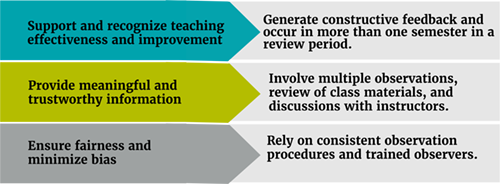The peer perspective for evaluation of teaching effectiveness involves relying on trained peers to review class materials, observe class sessions, and discuss goals and observations with the instructor.
Using the peer perspective can achieve important goals (below left) via robust practices (below right).

